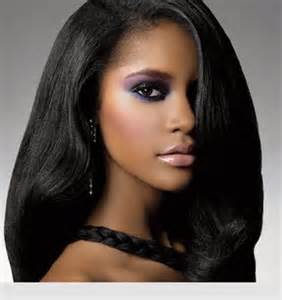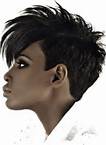With so many women getting hair extensions, it is to be expected that there will be questions if weaves can cause hair loss. Weaves have long been touted as a protective style for the hair. It provides needed hair coverage for persons having issues with hair loss, growing a short haircut etc. There is definitely a market for weaves but if it can cause hair loss, why is it still around? To answer this question, let us consider a couple of the ways that it is usually done.
Weaves can be done in several ways but the two most popular are:
- Sew-in: this is where hair is sown on tracks made from the person’s own hair. The tracks can be from straight cornrows or equally spaced points for attachment. For those with hair loss, there are also alternative ways of attaching the hair with the help of hair nets etc.
- Glue-in: in this case, a hair glue is used to attach the hair to the client’s natural hair. This technique is favored by those clients that are particular about the hair being flat to the head.
Of the two, I favor the sew-in weave most because it is just easier to remove. In the case of the glue-in, if the client tries to remove it on their own and do not use a lot of patience, glue can be left in the hair for months. This makes them hate the experience but if it is only left in up to 3 weeks and removed properly, it works.
The following are examples where weaves can cause hair loss:
- The hair is braided too tightly, and when hair is added to the tracks, it causes the hair to be pulled at the beginning of the track. I have seen cases where ladies had the hair braided so tightly their eyes were almond shaped. I have also had strange requests from women who like their hair braided this tightly because they want this look. The drawback is that later in life, they will experience a gradual loss of hair and will then try desperately to have it back.
- The client likes to weave the hair in one particular style. This causes traction alopecia, or hair loss in certain spots because weight rests on that one spot constantly. I change the way the hair is braided if the client is a regular but if they are not, I will see this problem often.
- For full head sew-in weaves, because the scalp is covered 24/7, the scalp does not get to breathe. I advise my clients to take a break during the summer and give the scalp some relief. Unfortunately, I will see new clients who have been doing weaves for years and now the area at the top of the head has become thin. They want to fix the problem by adding more hair but this is exactly what starts it in the first place. Weaves are addictive but breaks are necessary in order to maintain hair thickness over time.
- In the case of glue-in weaves, ripping the hair out during removal is common. This is especially true when the client becomes frustrated doing the removal themselves. Over time, if the hair gets pulled out in the same areas, the glue acts the same way as if the area was waxed. I see clients who relied on glue-in weaves during their twenties and now have to wear wigs daily because they have no hair in their forties.
- Hair glue must all be removed by applying some kind of oily product and carefully combing it all out or the hair will have a tendency to stick together and cause breakage later.
Weaves are a safe way to protect the hair if there is care taken in the technique used to have it done.
By Paula Barker, Silkielocks.com
Buy my e-book: Dreadlocks: A Hairstylist’s Manifest. (Silkielocks.com, Amazon.com)
Call (613) 789-2179 now to book your appointment if you are in the Ottawa, Canada area.





Recent Comments